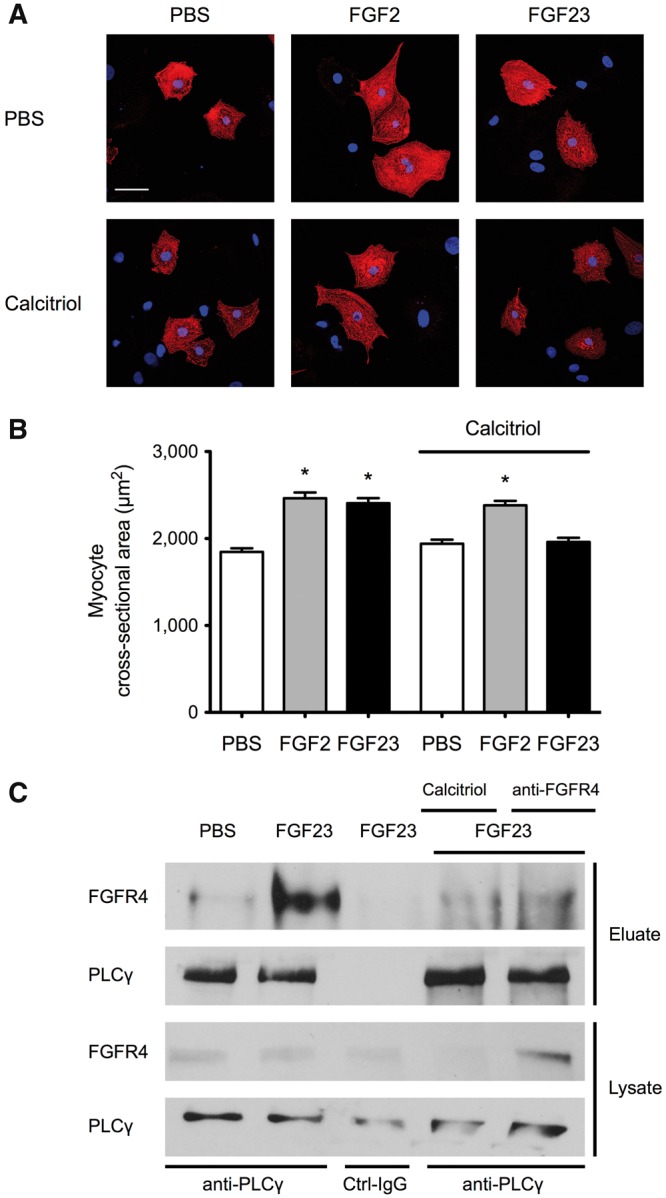FIGURE 5.

Calcitriol inhibits FGF23-mediated hypertrophic growth and FGFR4 signaling in NRVMs. (A) Immunofluorescence confocal images of isolated NRVMs that were co-treated with FGF2 or FGF23 and calcitriol for 48 h. Myocytes are labeled with anti-α-actinin (red), and DAPI (blue) identifies nuclei (original magnification ×40; scale bar 50 μm). NRVMs treated with FGF23 or FGF2 appear larger than PBS-treated control cells. Calcitriol blocks the effect of FGF23 but not FGF2. (B) Compared with PBS-treated control cells, 48 h of treatment with FGF23 or FGF2 significantly increases the cross-sectional area of isolated NRVMs (mean ± SEM). Co-treatment with calcitriol prevents FGF23- but not FGF2-induced hypertrophy (150 cells/condition; n = 3 independent isolations of NRVMs; *P < 0.0001 compared with PBS). (C) NRVMs were co-treated with FGF23 or FGF2 and calcitriol or an FGFR4 blocking antibody (anti-FGFR4) for 30 min followed by anti-PLCγ immunoprecipitation from total protein extracts. The amount of co-precipitated FGFR4 is increased in cells that were treated with FGF23 compared with PBS-treated control cells. In the presence of anti-FGFR4 or calcitriol, levels of FGFR4 in anti-PLCγ eluates are reduced. Immunoprecipitation with control antibody (Ctrl-IgG) does not result in purification of PLCγ or FGFR4.
